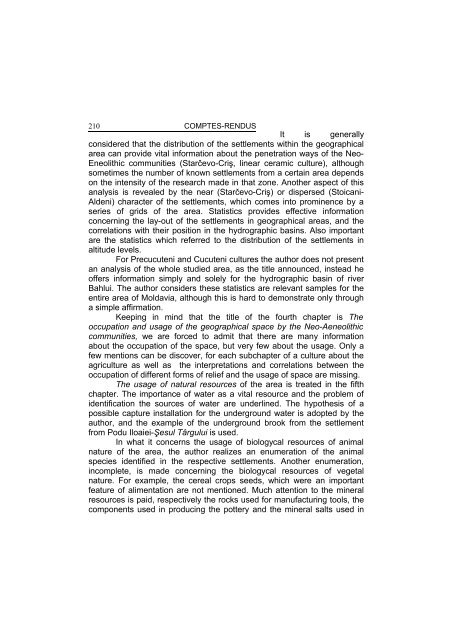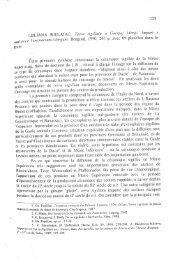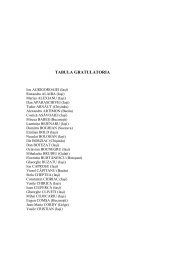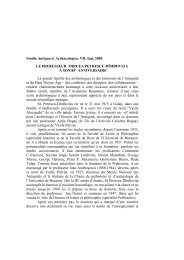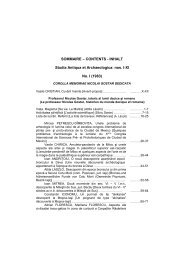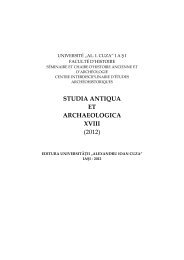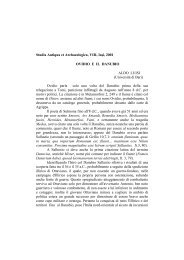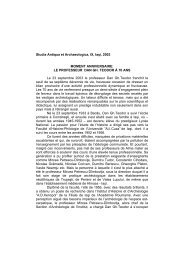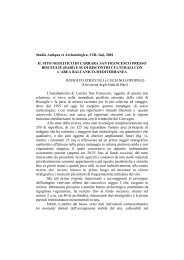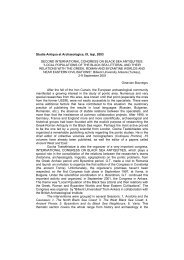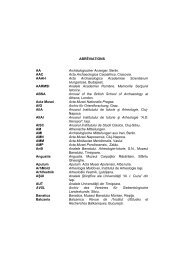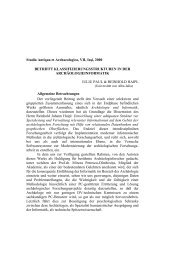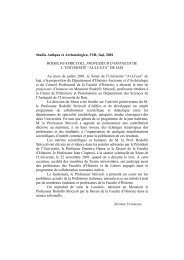VALERIU SÎRBU, Arheologia funerară şi sacrificiile: o terminolo
VALERIU SÎRBU, Arheologia funerară şi sacrificiile: o terminolo
VALERIU SÎRBU, Arheologia funerară şi sacrificiile: o terminolo
You also want an ePaper? Increase the reach of your titles
YUMPU automatically turns print PDFs into web optimized ePapers that Google loves.
210 COMPTES-RENDUS<br />
It is generally<br />
considered that the distribution of the settlements within the geographical<br />
area can provide vital information about the penetration ways of the Neo-<br />
Eneolithic communities (Starčevo-Criş, linear ceramic culture), although<br />
sometimes the number of known settlements from a certain area depends<br />
on the intensity of the research made in that zone. Another aspect of this<br />
analysis is revealed by the near (Starčevo-Criş) or dispersed (Stoicani-<br />
Aldeni) character of the settlements, which comes into prominence by a<br />
series of grids of the area. Statistics provides effective information<br />
concerning the lay-out of the settlements in geographical areas, and the<br />
correlations with their position in the hydrographic basins. Also important<br />
are the statistics which referred to the distribution of the settlements in<br />
altitude levels.<br />
For Precucuteni and Cucuteni cultures the author does not present<br />
an analysis of the whole studied area, as the title announced, instead he<br />
offers information simply and solely for the hydrographic basin of river<br />
Bahlui. The author considers these statistics are relevant samples for the<br />
entire area of Moldavia, although this is hard to demonstrate only through<br />
a simple affirmation.<br />
Keeping in mind that the title of the fourth chapter is The<br />
occupation and usage of the geographical space by the Neo-Aeneolithic<br />
communities, we are forced to admit that there are many information<br />
about the occupation of the space, but very few about the usage. Only a<br />
few mentions can be discover, for each subchapter of a culture about the<br />
agriculture as well as the interpretations and correlations between the<br />
occupation of different forms of relief and the usage of space are missing.<br />
The usage of natural resources of the area is treated in the fifth<br />
chapter. The importance of water as a vital resource and the problem of<br />
identification the sources of water are underlined. The hypothesis of a<br />
possible capture installation for the underground water is adopted by the<br />
author, and the example of the underground brook from the settlement<br />
from Podu Iloaiei-Şesul Târgului is used.<br />
In what it concerns the usage of biologycal resources of animal<br />
nature of the area, the author realizes an enumeration of the animal<br />
species identified in the respective settlements. Another enumeration,<br />
incomplete, is made concerning the biologycal resources of vegetal<br />
nature. For example, the cereal crops seeds, which were an important<br />
feature of alimentation are not mentioned. Much attention to the mineral<br />
resources is paid, respectively the rocks used for manufacturing tools, the<br />
components used in producing the pottery and the mineral salts used in


